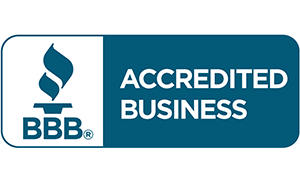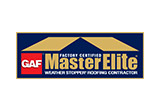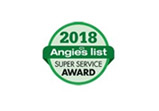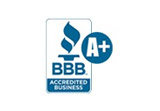According to Nationwide Insurance, wind damage accounts for nearly 40% of all insurance claims for roof repairs in the United States. Roof wind damage can lead to costly repairs and compromise a home’s structure if left unattended.
Join us as we look into practical ways to protect your home from wind-related roof damage, identify early signs of wear, and perform effective repairs.
Signs of Roof Wind Damage
Loose or missing shingles are among the most obvious signs of wind damage. Strong winds can lift shingles, breaking their seal, or even rip them off entirely. If you notice any gaps where shingles should be, it’s a good indication that wind has caused damage. Check for shingle fragments around your home’s foundation as well, as these can be another sign of roof wind damage.
Damaged flashing is another issue to look out for. Flashing, which is often placed around chimneys, vents, and roof edges, protects these areas from water intrusion.
High winds can loosen or bend flashing, creating spaces where water might enter. Damaged flashing needs prompt attention, as it can lead to leaks and further water damage inside the home.
Inside your attic, look for water stains or damp insulation. These can signal that wind damage has compromised the roof’s structure, allowing water to seep through. By regularly checking both the outside of your roof and the attic, you’ll have a better chance of spotting issues related to roof wind damage early on.
Regular Roof Inspections
Regular roof inspections are one of the best ways to prevent long-term damage and costly repairs. While inspecting a roof might not seem urgent, doing it routinely can help identify issues before they escalate.
Ideally, homeowners should have professional roof inspections at least once a year, along with personal checks after significant storms. There are three main benefits to regular roof inspection:
- Early Detection of Damage
- Preventing Small Problems from Growing
- Longer Roof Lifespan
Early Detection of Damage
Professional roof inspections can uncover minor damage that may be hard to see from the ground. Inspectors often spot things like lifted shingles, tiny punctures, or weakened flashing that could lead to leaks. Early detection makes it easier to handle these issues before they worsen.
Preventing Roof Wind Damage
Routine inspections help keep minor issues from turning into major headaches. A small crack in a shingle, for instance, might not seem serious. But over time, it can expand, creating a pathway for water to seep in. Regular inspections help catch these small signs of wear so repairs can be made promptly, protecting the home from water damage.
Longer Roof Lifespan
Consistent inspections and maintenance can extend the lifespan of a roof. By addressing wear early, homeowners reduce the risk of major damage, which can be costly to fix. Inspections often reveal maintenance tasks, like cleaning out gutters or reattaching loose flashing, that keep the roof in better shape over time.
Strengthening Your Roof Against Wind
Strengthening your roof against wind damage can provide peace of mind during storm season. By choosing the right materials and making a few upgrades, you can improve your roof’s durability and reduce the likelihood of future repairs. There are three primary ways to reinforce a roof to withstand high winds:
- Wind-Resistant Shingles
- Secure Flashing and Fasteners
- Impact-Resistant Materials
Wind-Resistant Shingles
Upgrading to wind-resistant shingles is one of the most effective steps you can take. The shingles are specifically designed to withstand high wind speeds, providing a stronger seal than standard options.
They resist lifting and tearing, which reduces the risk of exposure to underlying layers. Choosing shingles rated for high-wind areas can make a significant difference in your roof’s performance.
Secure Flashing and Fasteners
Ensuring that flashing is properly secured around vulnerable areas, like chimneys and vents, adds another layer of protection. Reinforcing or re-securing these areas helps keep water out and prevents wind from lifting materials.
Using high-quality fasteners that hold materials firmly in place can also enhance the roof’s resistance to wind. These steps help reduce weak points and add stability to the entire structure.
Impact-Resistant Materials
If your area frequently experiences strong winds or storms, consider impact-resistant materials like metal roofing or high-strength shingles. The materials withstand the force of airborne debris better than standard roofing options.
They may be more expensive initially, but the long-term benefits in terms of durability often justify the cost. Impact-resistant roofing can add significant protection to your home, especially in high-risk regions.
Preparing Your Home Before a Storm
Preparing your roof before a storm is one of the most effective ways to prevent roof wind damage. There are three main ways to get your roof ready for potential high winds:
- Clear Debris
- Trim Overhanging Branches
- Check and Secure Shingles and Flashing
Clear Debris from the Roof and Gutters
Before a storm, clear any debris from the roof and gutters. Leaves, branches, and other materials can clog gutters, causing water to back up and overflow onto the roof. When gutters are free of debris, water can drain properly, reducing pressure on the roof edges and lowering the risk of water damage during high winds.
Trim Overhanging Branches
Overhanging tree branches can cause significant damage if they break during a storm and fall onto the roof. Trimming these branches before a storm prevents them from striking the roof and damaging shingles or even creating punctures. Keeping branches a safe distance from the roof adds a layer of protection, especially in areas with frequent storms.
Check and Secure Shingles and Flashing
Inspect shingles and flashing for any signs of wear or looseness. Securing loose shingles and flashing before a storm hits can prevent wind from getting under them and lifting or tearing them away. When everything is properly secured, the roof is less vulnerable to wind-related damage, helping it withstand the impact of strong gusts.
Wind-resistant Roofing
Protecting your home from roof wind damage requires regular inspections, quick repairs, and proactive preparation.
At Innovative Roofing, we’re committed to providing reliable, top-quality roofing services. As a State Licensed and Certified Roofing Contractor with over 40 years of experience, we pride ourselves on keeping our promises, maintaining clear communication, and exceeding expectations.
Get in touch today to find out how we can help with your roofing needs!
















